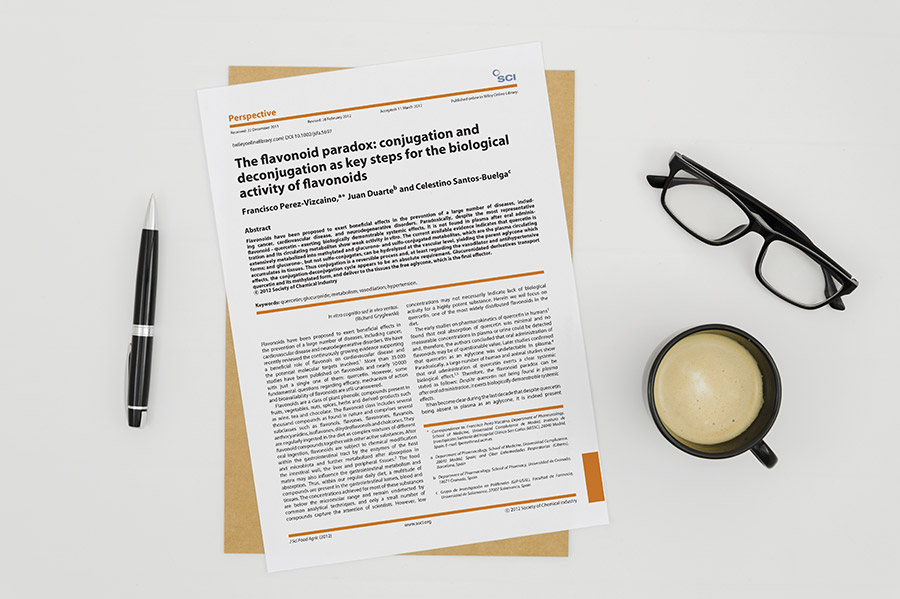THE PARADOX OF QUERCETINA

THE PARADOX OF QUERCETINA
Quercetin, like most of the naturally occurring flavonoids, is poorly absorbed in the intestine, and this therefore makes it a molecule largely excreted through the faeces. On the other hand, however, quercetin has been shown, especially in animal studies, to have various and important effects including the antioxidant effect. This is called the “flavonoid paradox”: poorly absorbed, but with a tangible effect.
How is all this possible? If in the blood we find a minimal trace of quercetin, how is it possible that this can be effective?
PARADOX SOLVED
The answer lies mainly in chemistry and physiology, as molecular substituents but also enzymes naturally present in our organism come into play.
Let’s start with the more chemical part of the matter. When quercetin is taken orally, it reaches the gut in glycoside form, associated with glucose, and is absorbed ending up in the bloodstream. Here, it is found in glucuronic or sulfate form. For these reasons, quercetin, like many other flavonoids, is not found in free form in the blood. This prevents an accurate assessment of its presence.
The enzymatic part, on the other hand, is closely linked to the chemical one and manages to resolve this apparent paradox. In fact, our body has specific enzymes that have been discovered to be able to convert quercetin into its aglyconic form (i.e. not linked to any other substituent, therefore in the free form) at the level of the tissues where this is received. The enzyme in question is called β-glucosidase and has the function of dividing quercetin from glucuronic acid, making it free to act at the level of target tissues. This enzyme is then able to “unblock” the trapped quercetin.
This is therefore the explanation given to the so-called “quercetin paradox”, as explained in the interesting article “The flavonoid paradox: conjugation and deconjugation as key steps for the biological activity of flavonoids” of 2012.
